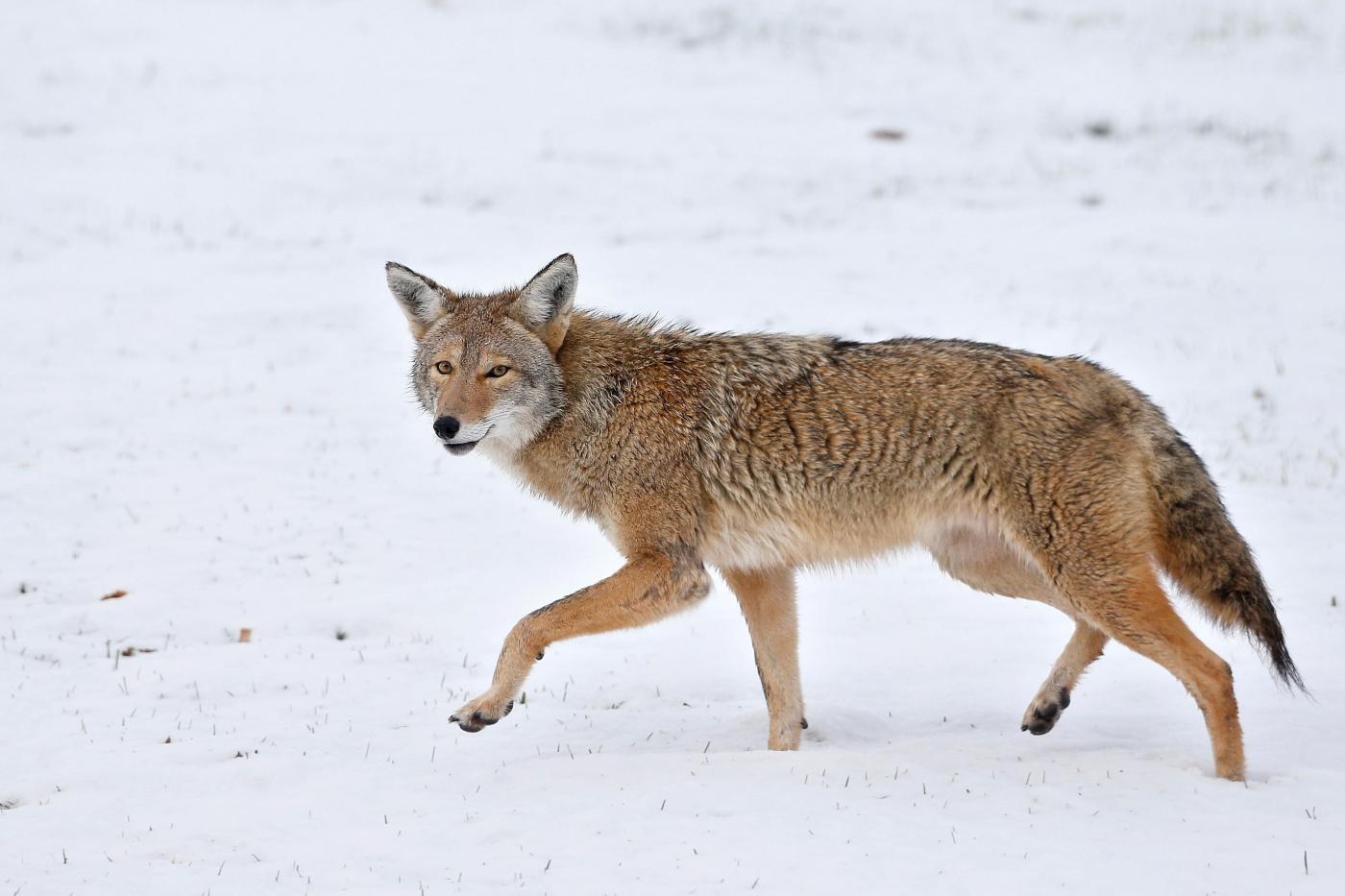
Coyotes in Massachusetts have reportedly attacked dogs during their mating season: Here’s how to prevent conflicts
With coyotes defending their territory and becoming more aggressive this time of year, state wildlife officials are reporting that dogs have been attacked — urging residents to prevent conflicts with coyotes during their mating season.
Coyotes, which live in every community in mainland Massachusetts including throughout Boston, are very active during the winter while courting mates and defending their territory.
Recently during this busy breeding season, local wildlife officials have received reports of coyotes attacking unsupervised dogs.
Typically when a coyote attacks a dog, the pet’s owner is watching the dog from a distance, whether it’s from their back door or deck.
“But they’re not right next to the dog, so the coyote doesn’t know a person is there,” Dave Wattles, black bear and furbearer biologist with the Massachusetts Division of Fisheries and Wildlife, told the Herald. “You really need to be standing right next to your dog.”
Also during mating season, wildlife officials receive reports of coyotes attacking larger dogs.
Coyotes can’t distinguish a dog from an intruding coyote, causing the coyote to be more aggressive toward medium- and large-sized dogs.
“Coyotes interpret those dogs as another coyote in their territory,” Wattles said. “And coyotes defend their territory, trying to keep other coyotes out from their turf. They see that large dog as a potential threat to their territory.”
Related Articles
Coyote euthanized in Massachusetts after the wild animal was ‘acting abnormally’
So what steps can people take to prevent conflicts with coyotes this mating season? Wattles said it’s a three-pronged approach:
Protect pets: Dogs should always be directly supervised on a leash when outdoors, especially during the coyote breeding season. Coyotes can’t differentiate between their natural prey and small pets, so they will view unprotected outdoor cats and small dogs as a potential food source.
Remove human-associated food sources from your property: Coyotes that find human-associated food sources will spend more time in yards and neighborhoods. It’s essential for neighbors to work together to secure or remove all human-associated food sources in a community. That includes bird seed, garbage, compost, pet food left outdoors, and backyard chickens. Also, never intentionally feed coyotes. That has led to coyotes biting humans in past years.
Haze coyotes: When you see a coyote in your yard, you should aggressively haze it. You can haze a coyote by creating loud noises by yelling or using a small air horn, waving a jacket overhead to look bigger, spraying a hose or throwing small objects in the coyote’s direction, and physically chasing and driving the coyote off.


